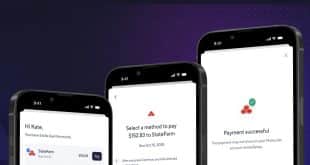The nascent market for faster funds transfers, which has been on the boil all year, heated up further this week with Fidelity National Information Services Inc.’s announcement of its real-time PayNet network.
The new system, which relies on FIS’s NYCE Payments Network LLC debit switch, is live with 200 FIS client institutions, and the company is in discussions with more banks about joining the network, Peter Gordon, senior vice president of Jacksonville, Fla.-based FIS’s payments network group, tells Digital Transactions News. Prospects include about 2,400 financial institutions that use FIS’s core-banking software, about 1,200 banks that use NYCE but are not otherwise FIS clients, and thousands of banks and credit unions that use other FIS products.
Gordon says PayNet started with the initial 200 users because they were already using FIS’s core-banking solution and were linked to NYCE, making startup easier. PayNet is open to any financial institution around the world, but new members that do not have a connection to Secaucus, N.J.-based NYCE must establish one. Joining NYCE does not oblige members to use other NYCE services.
PayNet enables near-instantaneous settlement for non-card transactions, such as person-to-person and bill payments. Indeed, FIS calls the system “the industry’s first global real-time payments network for domestic and international money movement for both retail and commercial trade.”
That puts FIS in line with a developing trend toward real-time, or at least same-day, funds movement, much of it driven by the rapid consumer adoption of smart phones. Last month, Brookfield, Wis.-based Fiserv Inc., which competes with FIS in debit networking and banking technology, introduced a mobile-acceptance service called SpotPay that it says will enable real-time card payments starting next year. And Des Moines, Iowa-based Dwolla, a startup that enables account holders to pay merchants and each other, introduced earlier this year technology that lets users make real-time transfers from bank accounts to their Dwolla accounts.
At the same time, NACHA, the governing body for the automated clearing house network, has moved to shave a day off of the network’s typical two-day clearing time for debits and credits. A same-day proposal won a majority of NACHA member votes in August, though it fell short of the threshold needed to be enacted.
The experience consumers are becoming accustomed to on mobile devices, including rapid search results and location-based rewards, is leading them to expect faster transaction times, experts say. “What PayNet is doing is fulfilling a need for real-time networks,” Gordon says. “Just like doing a search, people expect their money to be updated in real time. They don’t have a concept of batch-and-hold or memo posting.”
PayNet’s “secret sauce,” Gordon says, is that it translates a user’s bank-account number into a 16-digit primary account number, or PAN, that would be familiar to debit networks. PayNet then delivers this derived PAN in an ISO format that can be read and immediately processed by these networks. FIS has applied for a patent for the process behind this translation, Gordon says. Next year, the network plans to introduce the ability to accept tokenized PANs from financial institutions that can be cross-referenced to the underlying account.
With PayNet, financial institutions can act as either issuers or originators, or both. Merchants and billers can be sponsored into the network by these institutions. PayNet will collect network fees from both financial institutions and merchants. Banks may then reprice the service to consumers and merchants. Preliminary network pricing has been established, but it won’t be published until early next year, Gordon says.
Pricing may prove critical to PayNet’s fortunes. “I’m waiting to see the pricing, that’s always the gotcha,” says Aaron McPherson, director of the financial-services practice at IDC Financial Insights. How participating banks price the service to users will be important, as well. “We need to wait and see what banks do with it,” notes McPherson. “A wonderful new system doesn’t mean much if banks don’t price it at a rate that’s attractive to consumers. It’s up to the banks to sell it.”
Still, the advent of a real-time funds-transfer system like PayNet could also prove to be crucial for the development of mobile payments, in particular, McPherson says. “It’s very important,” he observes. “It’s really the missing piece behind mobile payments.”




